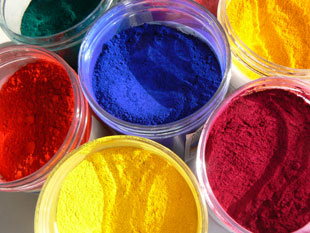Chauchala,
Four sectioned roof ; it became a prominent motif in the Rajshahi Kantha geometric form of embroidery, West Bengal.
Four sectioned roof ; it became a prominent motif in the Rajshahi Kantha geometric form of embroidery, West Bengal.
Chauhan,
A caste of Muslim carters found in Sind, whose patchwork quilts are noted for their beauty.
A caste of Muslim carters found in Sind, whose patchwork quilts are noted for their beauty.
Chemical Dyeing,
The discovery of the structure of benzene in 1865 in Europe heralded the shift from natural dyes to chemical dyes. Chemical dyes - direct dyes, sulpher dyes, napthol dyes, vat dyes and reactive dyes - that are used today were developed during the period 1878-1956. They offered a wide range of colors with an ease of application along with the properties of fastness that suited modern day usage.
The discovery of the structure of benzene in 1865 in Europe heralded the shift from natural dyes to chemical dyes. Chemical dyes - direct dyes, sulpher dyes, napthol dyes, vat dyes and reactive dyes - that are used today were developed during the period 1878-1956. They offered a wide range of colors with an ease of application along with the properties of fastness that suited modern day usage.
Chhau,
Spring festival in Bengal, Bihar and Orissa involving elaborate ritual dance dramas in honour of Nata Bhairava, the fearful dancing form of Shiva.
Spring festival in Bengal, Bihar and Orissa involving elaborate ritual dance dramas in honour of Nata Bhairava, the fearful dancing form of Shiva.
Chhipa,
The block printer caste in Northern India. The word chhipa or printer is derived from the Hindi word chhapna, "to print".
The block printer caste in Northern India. The word chhipa or printer is derived from the Hindi word chhapna, "to print".
Chikan,
Chikan embroidery now practised mainly in Lucknow, Uttar Pradesh. Executed in white thread on white muslin, the floral motifs employ satin stitch, buttonhole stitch, darn stitch, knot stitch, netting and appliqué work in a subtle shadowy lace appearance. Noor Jehan, wife of the Mughal emperor Jehangir, is said to have introduced Chikan embroidery.
Chikan embroidery now practised mainly in Lucknow, Uttar Pradesh. Executed in white thread on white muslin, the floral motifs employ satin stitch, buttonhole stitch, darn stitch, knot stitch, netting and appliqué work in a subtle shadowy lace appearance. Noor Jehan, wife of the Mughal emperor Jehangir, is said to have introduced Chikan embroidery.
